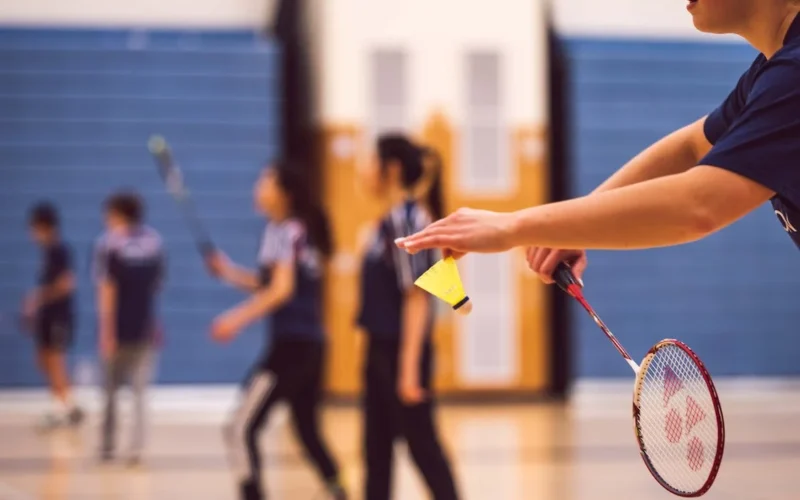
Unleashing the Spin Serve: Mastering the Art of Deception in Badminton
Recently, the BWF Council approved a proposal for an ‘experimental variation’ to the Laws of Badminton to forbid the use of the so-called ‘spin serve‘. The serve, which involves the shuttlecock being hit with a high degree of spin, has been the subject of much debate in recent months, with some players arguing that it is unfair and difficult to return. The ban will come into effect immediately and be reviewed after six months.
What is a Spin Serve?
The spin serve is a crucial technique that can give players a significant advantage on the court. The spin serve is a deceptive shot that can catch opponents off guard and create opportunities for scoring points.
Badminton is a fast-paced and dynamic sport that demands a wide range of skills from its players. Understanding the Spin Serve: The spin serve, also known as the short serve, is primarily used to initiate a rally by forcing the opponent to lift the shuttlecock. Unlike the conventional high service, which aims to send the shuttlecock deep into the opponent’s court, the spin serve will land near the front, near the service line.
The objective of the spin serve is to generate spin on the shuttlecock, making it difficult for the opponent to control the return shot. By utilizing different types of spins, such as backspin, topspin, and sidespin, players can manipulate the flight path and speed of the shuttlecock, adding an element of unpredictability to their serves.
Unleash Your Badminton Game with the Dynamic Spin Serve!
How to Mastering the Spin Serve Technique:
- Grip and Stance: Begin by adopting a relaxed grip on the racket, allowing for better control and maneuverability. Maintain a balanced stance to ensure stability during the serve. Position yourself diagonally in the service court, with your non-racket foot slightly forward.
- Shuttlecock Placement: Aim to strike the shuttlecock just below its center to produce a spin effect. For a backspin serve, contact the shuttlecock slightly below its equator, while for a topspin serve, strike it somewhat above its center.
- Racket Swing: As you swing the racket, focus on brushing the shuttlecock with the strings rather than hitting it forcefully. The brushing motion, coupled with the correct contact point, will generate the desired spin.
- Spin Variations:
a) Backspin Serve: To execute a backspin serve, angle the racket face slightly downward and swing upward, imparting a backspin motion on the shuttlecock. It causes the shuttlecock to decelerate rapidly upon crossing the net, making it challenging for the opponent to control the return.
b) Topspin Serve: For a topspin serve, angle the racket face slightly upward and swing downward, creating a topspin rotation on the shuttlecock. It causes the shuttlecock to dip faster over the net, thus making it hard for the opponent to anticipate its trajectory.
c) Sidespin Serve: To add sidespin to your serve, angle the racket face slightly to the left or right, depending on the desired spin direction. Combine this with the appropriate swing to create a lateral spin effect, making it challenging for the opponent to predict the shuttlecock’s path.
Practice and Adaptation:
Mastering the spin serve requires consistent practice to develop precision, timing, and control. Gradually incorporate spin variations into your game, alternating between backspin, topspin, and sidespin serves to keep your opponents guessing. Begin by practicing each spin variation individually, focusing on the technique and achieving the desired spin effect.
Observe your opponents closely during matches to identify their weaknesses and adapt your spin serves accordingly. By exploiting their vulnerabilities, such as poor backhand returns or difficulty handling high-paced shots, you can gain a tactical advantage and seize control of the rally.
What are the Pros and Cons of Spin Serve
Pros of Spin Serve
- Unpredictability: Spin serve can be very unpredictable, changing direction or bouncing unexpectedly. It can make it difficult for the opponent to return the shuttlecock.
- Control: Spin serve can give the player more control over the shuttlecock because the spin can keep it in the court or make it difficult for the opponent to reach.
- Variation: Spin serve can create a variety of different shots. It can make it difficult for the opponent to anticipate what the player will do next.
Cons of Spin Serve
- Difficulty: Spin serve can be challenging to learn and master because it requires a lot of skill and precision to hit the shuttlecock with the right amount of spin.
- Risk: Spin serve can be risky because it can quickly be returned if the player does not hit it correctly. It can lead to the player losing the point.
- Unfairness: Some argue that spin serve is unfair, as it can be challenging to return. It has led to calls for banning this technique from various badminton competitions.
Here are some additional tips for using spin serve effectively:
- Practice regularly to develop your accuracy and precision.
- Experiment with different types of spin to find what works best for you.
- Be aware of the risks of using spin serve, and be prepared to lose points if you do not hit it correctly.
- Use spin serve strategically to create opportunities for yourself and to disrupt your opponent’s rhythm.
The badminton spin serve is a powerful weapon that can disrupt opponents’ rhythm and create scoring opportunities. Mastering the technique requires a combination of proper grip, stance, racket swing, and spin variations. Through consistent practice and adaptability, you can add a new dimension to your game, elevate your full potential, and become a formidable force on the badminton court.


